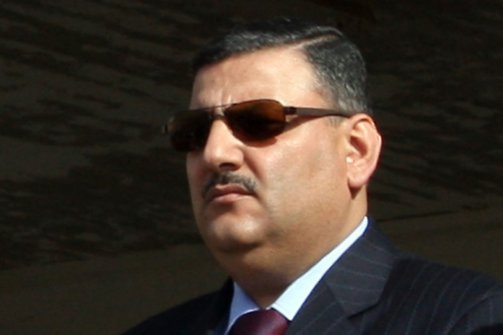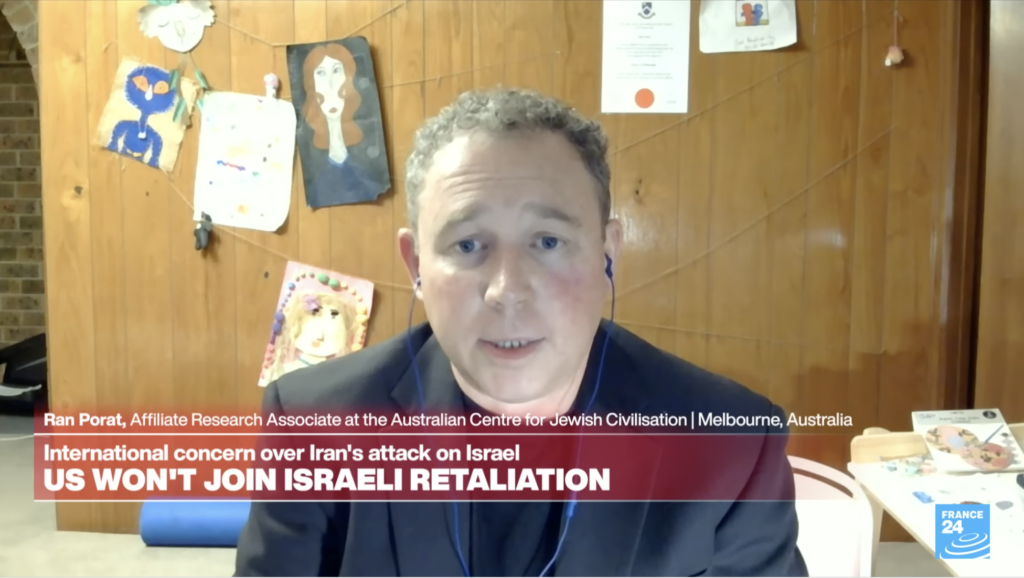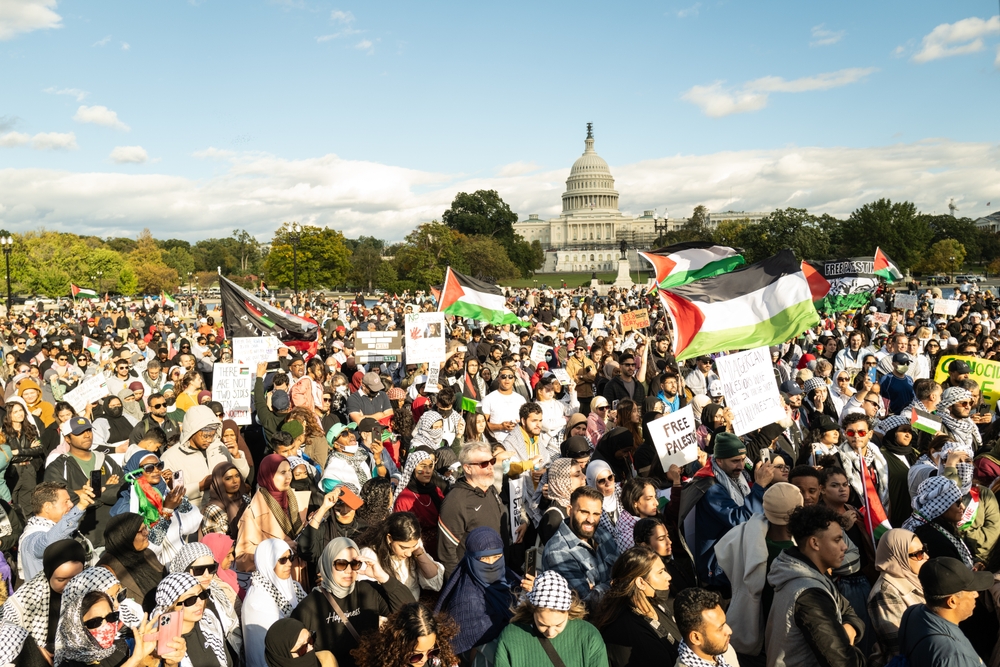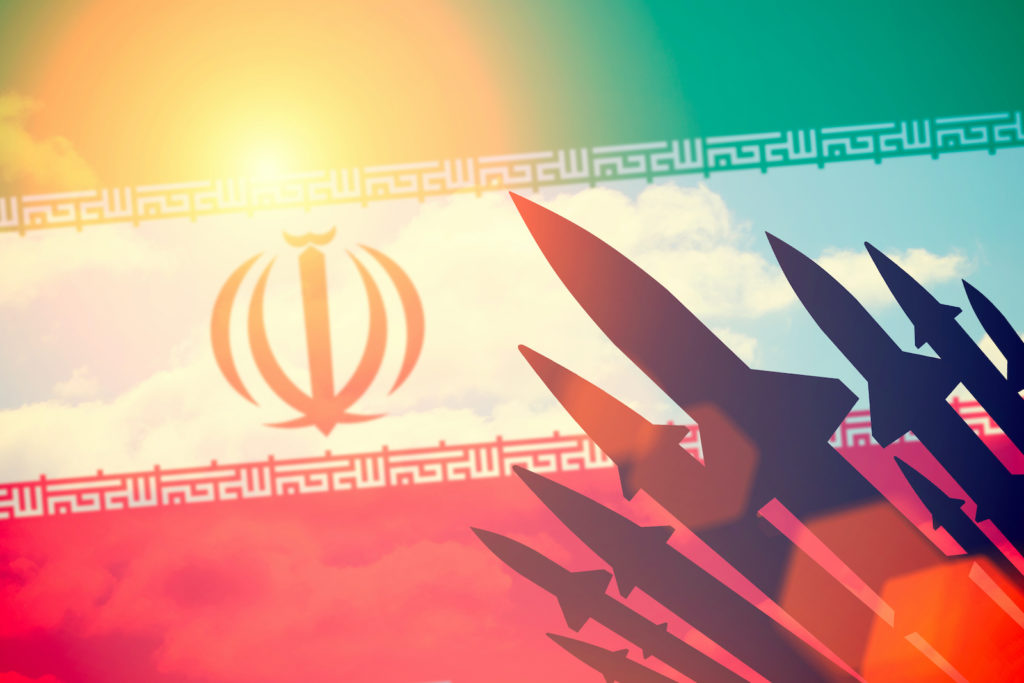UPDATES
Syria’s Civil War after PM’s Defection
Aug 13, 2012

Update from AIJAC
August 13, 2012
Number 08/12 #03
The defection of Syria’s Prime Minister, Riad Hijab, to Jordan and the rebel side earlier this week – the latest in a string of high profile defections from the regime – has raised speculation that the bloody civil war there has turned a corner. This Update focuses on analysis of where things now stand in Syria, and how the changing situation might affect Western policy calculations.
First up is an argument for changing policies in the wake of the latest developments in Syria in an editorial from the Washington Post. The paper notes the defection of Mr. Hijab and also an International Crisis Group report which makes it clear, correctly, that the regime is long past agreeing to compromise or agreeing to a “managed transition – while the longer the civil war goes on the less likely a democratic and pluralist government will follow. Based on this, the paper makes a recommendation that the best policy is to try to assist the rebels to win as quickly as possible, while at the same time attempting to make contact with rebel leaders in Syria and encouraging them to prepare a future where a democratic transition will be developed with international assistance, and a place for ethnic minorities. For the paper’s complete argument, CLICK HERE.
Next up is an interview with Ammar Abdulhamid probably the most knowledgeable of the opposition chroniclers of the civil war in Syria, as conducted by Barry Rubin (who sadly, it has recently been revealed, is seriously ill). Adbulhamid agrees that the rebels are improving their effectiveness, but says that neither side can back down, so the outcome will only be resolved militarily; he says well-funded Salafists are gaining in importance among the Syrian rebels; and notes that the external leadership of groups like the Syrian National Council is increasingly irrelevant. He also has some worrying things to say about the growing sectarian nature of the conflict, and how the lack of international will to intervene makes the danger of post-conflict massacres worse. For the insights of this very knowledgeable observer of the Syrian situation, CLICK HERE.
Finally, Australian-raised Washington Institute scholar and former Israeli peace negotiator Tal Becker (who is due to visit Australia next month) weighs in on Syria and the wider context of the so-called “Arab Spring”. Becker argues that the victory of the Assad regime would send the message that tyranny pays, but its overthrow might, if properly handled, establish the principles (sorely needed in the Middle East) that “a leader who threatens his own people risks losing the legitimacy to govern.” He suggests that the key to a better future for the region is not necessarily immediately establishing democracy, but instead ending the “use of fear as a tool of governance” – that is, regimes that oppress, torture and kill their citizens to keep power – and this is the real test for post-Civil war Syria. For his argument in full, CLICK HERE.
Readers may also be interested in:
- A report from the multiple front lines in the Syrian capital.
- Veteran American Middle East diplomat Aaron David Miller on why the resignation of Kofi Annan as UN envoy at the beginning of the month only revealed the obvious fact that, in Syria, the “margin for a diplomatic solution was always small to nonexistent at best.”
- Ari Shavit, a columnist from Haaretz who has long advocated an Israeli-Syrian peace deal, produces a soul-searching piece admitting that, given current circumstances, such a deal would have been a major mistake for Israel.
- Michael Totten notes a scarily prescient 18-year-old article on Syria by noted analyst and writer Robert D. Kaplan.
- Walter Russell Mead on the growing sabre-rattling about Syria by both Turkey and Iran.
- An interesting contrast between what Iran and Hezbollah, an Iranian client, are saying about the situation in Syria. Meanwhile, Hezbollah has been caught smuggling explosives into Israel.
- Former Israeli general Shlomo Brom offers a useful guide to the strategic challenges posed by Syria’s massive chemical weapons stocks and what Israel and the US can do to minimise the risk that they will be either used or fall into the wrong hands.
- Lebanon copes with an influx of mainly Palestinian refugees from Syria.
- An important report on the growth of Mali as a base for potential al-Qaeda terrorism.
- An Egyptian Muslim Brotherhood-linked cleric goes to Gaza with the message that people all over the world “thirst for the blood of the Jews.”
- Some more interesting comment on why the Palestinians of the West Bank and Gaza have failed to thrive economically when their diaspora counterparts have often been very successful. Meanwhile, columnist Jonah Goldberg notes, following the controversy over Mitt Romney’s comments linking culture and Israeli and Palestinian economic outcomes, that, outside of political point-scoring, virtually everyone agrees that “cultural factors are inextricably tied to a productive society.”
- Revelations that the terrorists behind the Sinai attack last week received assistance from Afghanistan and Iraq.
- Some examples from the many stories and comments now appearing at AIJAC’s daily “Fresh AIR” blog:
- Or Avi-Guy looks at the lessons of Iranian President Ahmadinejad’s latest rant about “400 years of Zionism”.
- Sharyn Mittelman in the Canberra Times on how the failure to honour the Munich victims has betrayed the Olympic ideal.
Getting around a dead-end in Syria
By Editorial Board
Washington Post, Published: August 9
THE DEFECTION of Syria’s prime minister to Jordan on Monday prompted yet another White House declaration that the regime of Bashar al-Assad is “crumbling.” While we hope that this is the case, it seems more likely that the administration’s prediction will prove as premature as its previous announcements of Mr. Assad’s imminent downfall, dating back a year. The grim reality is that the regime and the brutal war it is waging in Syria’s cities is likely to go on and on — unless the United States abandons its policy of passivity.
Experts on Syria say that Mr. Assad’s power structure is not so much crumbling as fragmenting along ethnic lines. What remains is a hard core of military units and their leaders, drawn from the minority Alawite sect. The defecting prime minister, like almost all of the 40 other senior government and military officials who have switched sides, is from the majority Sunni population. Other ethnic groups in Syria are going their own ways: The Kurds in the northeast of the country have taken over their own territory and hope to establish an autonomous region like that in Iraq.
What remains of the regime is still able to mount formidable military operations, like the current assault on opposition-held districts in the city of Aleppo. Its scorched-earth strategy leaves no room for compromise. As a new report from the International Crisis Group grimly notes that “the regime has essentially been stripped down to a broadly cohesive, hardcore faction fighting an increasingly bitter, fierce and naked struggle for collective survival. It is mutating in ways that make it impervious to political and military setbacks, indifferent to pressure and unable to negotiate.”
The report also notes that opposition forces had become increasingly anti-Alawite and that fundamentalist Islamic ideology was on the rise, as was a “loss of faith in the West.” Other sources report that hundreds of fighters from al-Qaeda have infiltrated the country and are steadily raising their profile.
All this underlines a point made five months ago by some of the State Department’s own Syria experts: The longer the fighting in the country goes on, the more it evolves toward open sectarian war, promotes extremist ideology and undermines the possibility of an eventual settlement based on pluralism and democratic principles. That’s why the Obama administration was foolish to waste the intervening months backing a feckless U.N. diplomatic initiative and why its current attempts to promote a “managed transition” from the Assad regime are equally misguided.
The only workable policy in Syria is one that aims at ending the civil war as quickly as possible with a victory for the opposition. A coup by regime elements that removes Mr. Assad may still be possible, but only if generals perceive that the war is lost. That means supplying the rebels with the arms they need to stop the tanks and planes of the Assad forces. To protect civilians, safe zones can be established along Syria’s borders with Turkey and Jordan, with help from Turkey or NATO.
Taking such steps would help the United States establish relations and exert influence over those forces that will likely be the next leaders of Syria — the commanders of the Free Syrian Army. A major effort should be made to persuade them to plan for a postwar order in which Alawite and other minorities are protected and a transition to democracy is organized with international assistance. Though U.S. diplomats have been pushing that agenda, they have focused mainly on exiled opposition leaders, rather than those doing the fighting. As veteran diplomat James Dobbins, who helped guide U.S. interventions in the Balkans and Afghanistan, noted in congressional testimony last week, “American influence and ability to advance such goals will tend to be in direct proportion to the help the United States provides the opposition in their fight to overthrow the regime.”
By refusing to step in, the Obama administration is merely ensuring that Syria’s future leaders will be more resistant to the West and perhaps more open to groups such as al-Qaeda. It is also giving the enduring hard core of the Assad regime the space and the opportunity to fight on.
Back to Top
————————————————————————
The Good, the Bad, and the Ugly About the Syrian Civil War
Question: It now seems that the tide in Syria’s civil war is turning toward the opposition. Why is that happening?
I wouldn’t say the tide is turning, I’d say that the armed opposition is getting more organized and bold, and its tenacity, growing popularity, coupled with President Bashar al-Assad’s cruelty, are inspiring more defections and despair inside the ranks of the regime.
Also, by continuing to play on sectarian sentiments, Assad continues to find success in ensuring the loyalty of the Alawites, the majority of whom keep seeing an existential threat in having regime change take place. However, by going down the route of ethnic cleansing in the coastal and central parts, Assad and his militias managed to create an existential threat for the Sunnis as well.
Of the two million Syrians who have been forcibly displaced inside Syria by Assad’s crackdown, the overwhelming majority is Sunni. These people are angry, bitter, and radicalized, and their very lot in life at this stage is inspiring anger and hate in the minds and souls of Sunnis with whom they come in contact.
Both sides now view the situation in sectarian and existential terms. So no one can back down.
Question: How do you assess the balance in the opposition between Salafists, the Muslim Brotherhood, professional military officers, and moderate democrats?
By having greater access to funds, hence weapons, the Salafists have managed to carry favor with the armed groups, and they are now a dominant force. But that does not necessarily translate into political support or sympathies. The political councils that are emerging to manage the day-to-day affairs of liberated towns and villages have not endorsed an Islamist agenda, or any of the traditional political groups, be they secular or Islamist. The revolutionary scene remains pretty much an open field as far as political ideology is concerned.
Question: With the Syrian National Council (SNC) being dominated by the Brotherhood, what are the key alternative leadership groups? Are you concerned that the United States and other countries might impose the SNC on the country?
By now, and considering the sacrifices that have been made and continue to be made by the revolutionaries, it is highly unlikely at this stage to expect that a group dominated by traditional opposition groups and expatriates can actually be considered legitimate enough to lead. Indeed, SNC’s credibility has long evaporated due to its inability to deliver, and, by association, the Brotherhood’s own credibility, shaky to begin with, was marred. It’s clear to all by now that SNC is not the answer for leading the challenges of governance during the transitional period.
It’s for this reason that some experts are postulating a role for the recent defector Brigadier General Manaf Tlas. But Manaf is too much of a regime insider to be popularly accepted as a legitimate leader, even for a transitional period. The best he could do is play a supporting role. The main actors have to be derived from the ranks of the revolutionary movement inside Syria. Only when such actors become in charge can the Syrian people be assured that their revolution has succeeded.
It’s good that the United States seems obsessed with ensuring post-Assad stability, but stability at the expense of liberty is a notion that the Syrian people have learned to reject. American and international officials should be mindful of that as they chart their policies.
Question: What is the Kurdish attitude toward the opposition and the regime?
It’s clear, considering recent developments, that Syria’s Kurds have decided to reject both: the regime and the traditional opposition. Both have only offered raw deals all through the years. Their attitude could change though the moment the Arab-dominated traditional opposition groups learn that Kurdish demands for autonomy are legitimate. and that the right thing to do at this stage is agree to the best formula for that within the context of a new decentralized Syria.
Question: What do you see emerging in a post-Assad Syria?
The activist in me wants to see a democratic decentralized entity emerge that is capable of responding to the developmental needs and aspirations of the people, irrespective of their religious, national, or political background, in each province, region, and district. The analyst in me has to grapple with the possibility of inheriting a failed state composed of warring fiefdoms, and of the need to find ways to put the pieces back together again, a process that would take years. It was from the beginning clear to me that the transformation of Syria will prove a much longer process than most of us have expected or wanted. But our dream for a democratic state will guide us through the thin and thick of it all.
Question: How can the opposition deal with an Alawite fortress region in the northwest where the regime would try to hold out?
No one has any plans to “invade” Alawite-majority areas. What is needed right now is to stop the ethnic cleaning and to ensure the safe return of displaced population to their homes. Peacekeepers could and should be introduced to ensure a separation of forces for a certain agreed period. Meanwhile, we should all begin a serious conversation on the future administrative structure of Syria.
Question: Are you pleased or concerned about Saudi, Qatari, and Turkish influence on the situation?
It was clear from the very beginning that all sorts of regional and international players have a stake in the outcome of the revolution in Syria, and that many will try to influence it. What concerns me is that the United States and the European Union are not doing nearly enough to exert their own moderating influence on the process, despite their repeated appeals to the Syrian people from the early days of the revolution. The absence of this influence is as telling and influential as any.
Question: We haven’t heard much about the attitudes and activities of the Druze minority. Can you discuss this point?
The Druze of Syria constitutes 2-3% of the population in the country, and that makes them risk averse. Developments in Lebanon after the assassination of former prime minister Rafiq Hariri and the changing positions of Lebanese Druze leader Walid Jumblatt had already exerted their toll on the Druze community of Syria long before the revolution and gave both Assad and Druze elders enough time to reconsider their relations.
In fact, and over the last few years, and away from public scrutiny, Druze elders and other agents of influence in the Druze community seems to have negotiated a form of communal autonomy for themselves, or at least a local power-sharing arrangement of sorts between local figures and regime-appointed figures. This gives them little reason to join a revolution that could jeopardize that.
Question: Clearly there is the threat of ethnic massacres and we have already seen some examples of this problem. Is there hope of minimizing or avoiding such bloodshed?
An active international involvement drawing on previous lessons from the Balkans, the failures and the few successes, can help us avoid these scenarios. But since prospects for such involvement remain dim, we could only put our faith in the hands of the on-the-ground activists and their ability to produce a miracle and keep ethnic massacres to a minimum.
Back to Top
————————————————————————
The Real Test in Syria Is Whether Fear Is at an End
Tal Becker
Financial Times – August 8, 2012
The true measure of progress in Syria and, perhaps, the Middle East is whether the revolution undermines the use of fear as a tool of governance.
The proposition tested by the Arab uprisings was never really whether democracy’s moment had come in the Middle East. It was whether Arab dictators could continue to oppress, torture and kill their citizens to keep power.
These used to be the standard tactics for the region’s despots. But the case can be made that Zine al-Abidine Ben Ali of Tunisia, Muammer Gaddafi of Libya, Hosni Mubarak in Egypt and now, perhaps, Bashar al-Assad in Syria all sealed their fate when they turned their forces against their own citizens.
Of course, progress has hardly been uniform and may be reversible. But the upheavals have at least created the opportunity to advance a new regional principle: that a leader who threatens his own people risks losing the legitimacy to govern.
Nowhere in the region has this proposition been more tested than in Syria. For as long as Mr Assad’s regime held on to power — using the same techniques his father employed — the lesson was that tyranny pays. Now that his hold appears finally to be slipping, the authority of that lesson is dealt a serious blow.
It may, however, not be a decisive one. If Syria disintegrates into sectarian war; if Sunnis take revenge on Alawites; if all that changes is the identity of the oppressor, not the nature of the oppression; the savage tools of the past will retain their appeal. Dictators and extremists may conclude that the only mistake Mr Mubarak or Mr Assad made was not to be brutal enough. While the moral and strategic case for Mr Assad’s departure is compelling, it remains to be seen whether this would bring more or less security in the near term. The belief is that the regime’s fall would be a serious setback for Iran and Hezbollah and a net gain for more moderate (or pragmatic) forces. But when it comes to realpolitik, this conclusion may be temporary.
Sectarian warfare and chaos bring their own problems. The spectre of Mr Assad’s non-conventional arsenal falling into extremist hands is a frightening one. Syria’s fracture could produce the kind of volatility across Syria’s borders that Israel has experienced across the Lebanese one. Iran could prove more adept at exerting its influence, and protecting its links with Hezbollah, in a Syria torn by sectarian strife, than many are yet willing to concede. And who can know what threat the forces that emerge in Damascus may pose to regional stability?
For all the importance of removing the brutal Assad regime, the risks associated with its demise are significant and must be mitigated. His removal, for example, should probably not include the wholesale dismissal of state officials or the dismantling of state institutions, allowing for the kind of chaos the de-Ba’athification of Iraq produced. Similarly, decisively weakening Iran will be important to limit its reach into a post-Assad Syria. Also crucial are efforts to build an inclusive constitutional and governing structure that might hold Syria together and prevent retaliation against Alawite communities or cross-border provocations.
These measures and others are vital to ensure a smoother transition to a post-Assad Syria, but they are also important for the region. Proving the oppression of one’s fellow citizens to be a bad idea would be a critical development by Middle Eastern standards. Good governance begins with a commitment to the inalienable rights and basic humanity of the governed. If the example of Mr Assad’s fall, and of the Arab uprisings, can help strengthen this commitment among ruling elites, even out of self-interest, it will be a real advance. If those who oust a dictator know that only by good governance and respect for their citizens can they retain power and earn international legitimacy, the Middle East will be moving in a better direction. It may not yet be democracy, but it is an indispensable milestone on the path to it.
All revolutions against dictatorial regimes are, at some level, about the transfer of fear. Populations afraid of regimes shift to regimes afraid of populations. The true test of progress, however, is whether the revolution undermines the use of fear as a tool of governance. This is the real test in Syria. It does not end with the removal of the Assad regime — it begins there. The hope for a patient transition to greater democracy in the Middle East may well hinge on passing it.
Tal Becker is an international associate with The Washington Institute.
Tags: Syria











